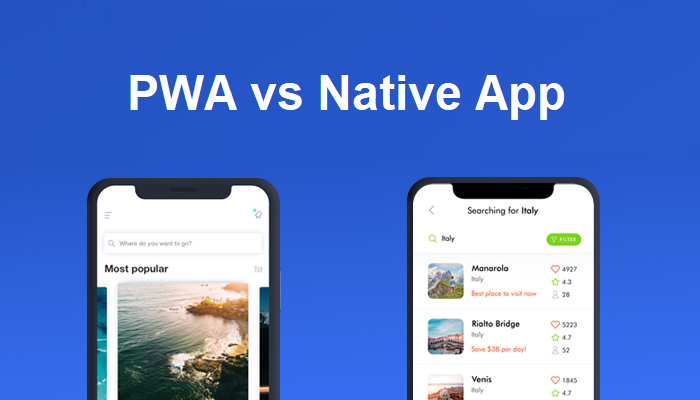Agencia 92: Your Source for Trending News
Stay updated with the latest insights and stories that matter.
Progressive Web Apps: The Hybrid Heroes of Modern Web Development
Discover why Progressive Web Apps are revolutionizing web development and how they can supercharge user experience and engagement!
What Are Progressive Web Apps and Why Are They Essential for Modern Development?
Progressive Web Apps (PWAs) are a revolutionary approach to web development, merging the best features of both web applications and mobile apps. They are built using standard web technologies such as HTML, CSS, and JavaScript, allowing them to work on any platform with a standards-compliant browser. PWAs provide a seamless user experience by enabling functions like offline capabilities, fast loading times, and push notifications. This makes them particularly essential in today's digital landscape where user expectations for speed and responsiveness continue to rise. More information on PWAs can be found at web.dev.
The importance of PWAs in modern development cannot be overstated. They enhance user engagement through their ability to load quickly and provide a native-like experience on web browsers. By utilizing service workers, PWAs can cache content and allow users to interact with an app even when offline, adding great value to user retention and satisfaction. Additionally, they can be easily shared via URLs, eliminating the need for app store installations. As businesses seek to reach wider audiences and improve the customer experience, integrating Progressive Web Apps into their digital strategies is becoming increasingly crucial. For further insights, check out Google Developers.

The Benefits of Progressive Web Apps: Enhancing User Experience and Engagement
Progressive Web Apps (PWAs) offer a multitude of benefits that significantly enhance user experience and engagement. One of the key advantages is their ability to work offline or on low-quality networks, which ensures that users can access the content they need without interruptions. With PWAs, you can deliver fast-loading applications that mimic the responsiveness of native apps, providing a seamless experience for users. This level of accessibility is crucial as it allows users to engage with your content anytime and anywhere, leading to increased retention rates and overall satisfaction.
Another important benefit of PWAs is their improved discoverability. Unlike traditional apps that require a download from an app store, PWAs can be easily shared via URLs and indexed by search engines, which drives more traffic to your site. This increased visibility is essential for businesses aiming to reach a broader audience. Additionally, PWAs offer native features like push notifications, which help re-engage users by giving them timely updates and reminders. As a result, your application not only captures users’ attention but also keeps them coming back for more, ultimately boosting your engagement metrics.
How to Get Started with Building Your First Progressive Web App
Building your first Progressive Web App (PWA) can be an exciting journey into modern web development. Start by understanding the core principles of PWAs, which combine the best of both web and mobile apps. Begin with a simple project idea, such as a to-do list or a weather app, to familiarize yourself with the process. Consult Google's Web.dev for a comprehensive overview and resources that explain the essentials of PWAs, including service workers, manifests, and the application shell model. These components will allow your app to function offline, load quickly, and provide a native-like experience.
Once you have a grasp of the fundamentals, set up your development environment. You will need a code editor, like Visual Studio Code, and a simple web server like http-server to serve your files locally. Create your app’s manifest.json file and configure it to define how your app will appear on the user's home screen. Don't forget to implement service workers to enable offline access and increase loading speed. For detailed guides, check out MDN Web Docs, which provide in-depth tutorials and examples to help you through each step of the process.